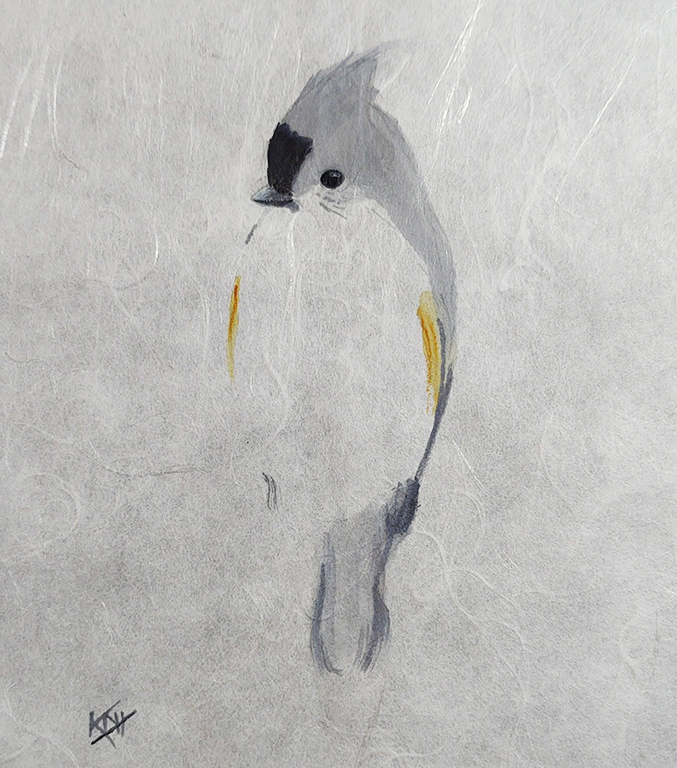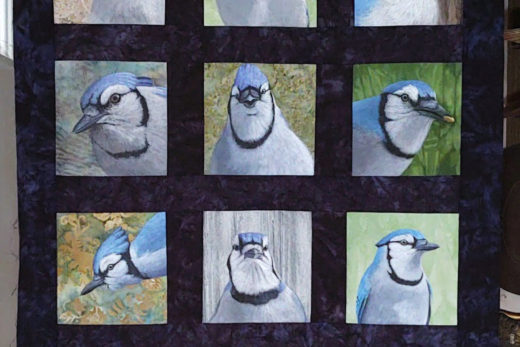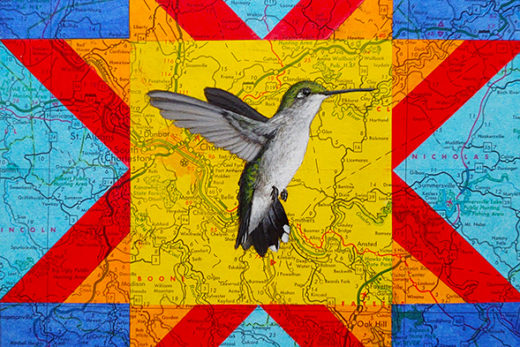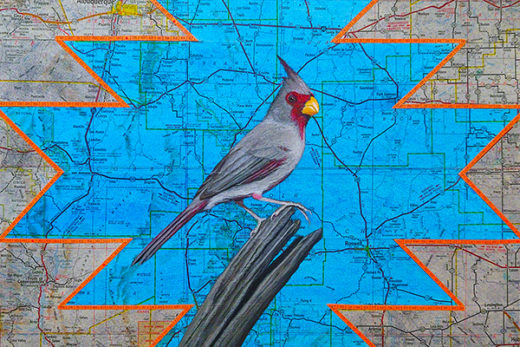I took a watercolor class recently. I want to be comfortable enough with it to, once in while, paint en plein air. As I was playing around with different paper weights, I remembered I had some Sumi paper. It’s made by adding long swirling mulberry fibers to a basic kozo pulp. The fibers are visible and the paper is a nice white and translucent. I got it to tinker around with adding different elements to my mixed-media pieces. Take a look at my Puffin piece – the Future History post.
The Sumi paper makes me think of simplicity. Chinese and Japanese ink wash paintings are typically monochromatic; simple and powerful. They are meant to convey the spirit or essence of a subject over a realistic approach. As an artist who focuses on birds, my thought was a minimal set of brushstrokes with watercolor, but do some detail work on the beak and eye using acrylic. The end goal being a painting exercise and maybe a form of meditation before I start with the day’s work on my usual pieces.
A favorite bird is the Tufted Titmouse. We have them year round, but see them more often when feeders aren’t crowded. I can identify with that as I tend to avoid crowds. We have a couple of pairs and I can hear them occassionally chattering to each other as the crowd at the window feeder thins; the Blue Jays can be a bit startling diving in and out of the nearby peanut feeder. I decided a Titmouse would be my first attempt. I used a diluted watercolor mixture of Payne’s Gray for the head and back with a quick touch of quinacridone gold along its flanks. I used less than 7 strokes. The beak and eye was done with acyrlic using bone black and some zinc white to get the gradients of the beak and that hint of eye shine.
Let’s also top of with a bit of verse. Since this a tribute to an East Asian art form why not a Tanka.

A silent Titmouse
waits for the others to feed
before emerging.
I sometimes watch from shadows
preferring just to observe.
~ K. Hammon



